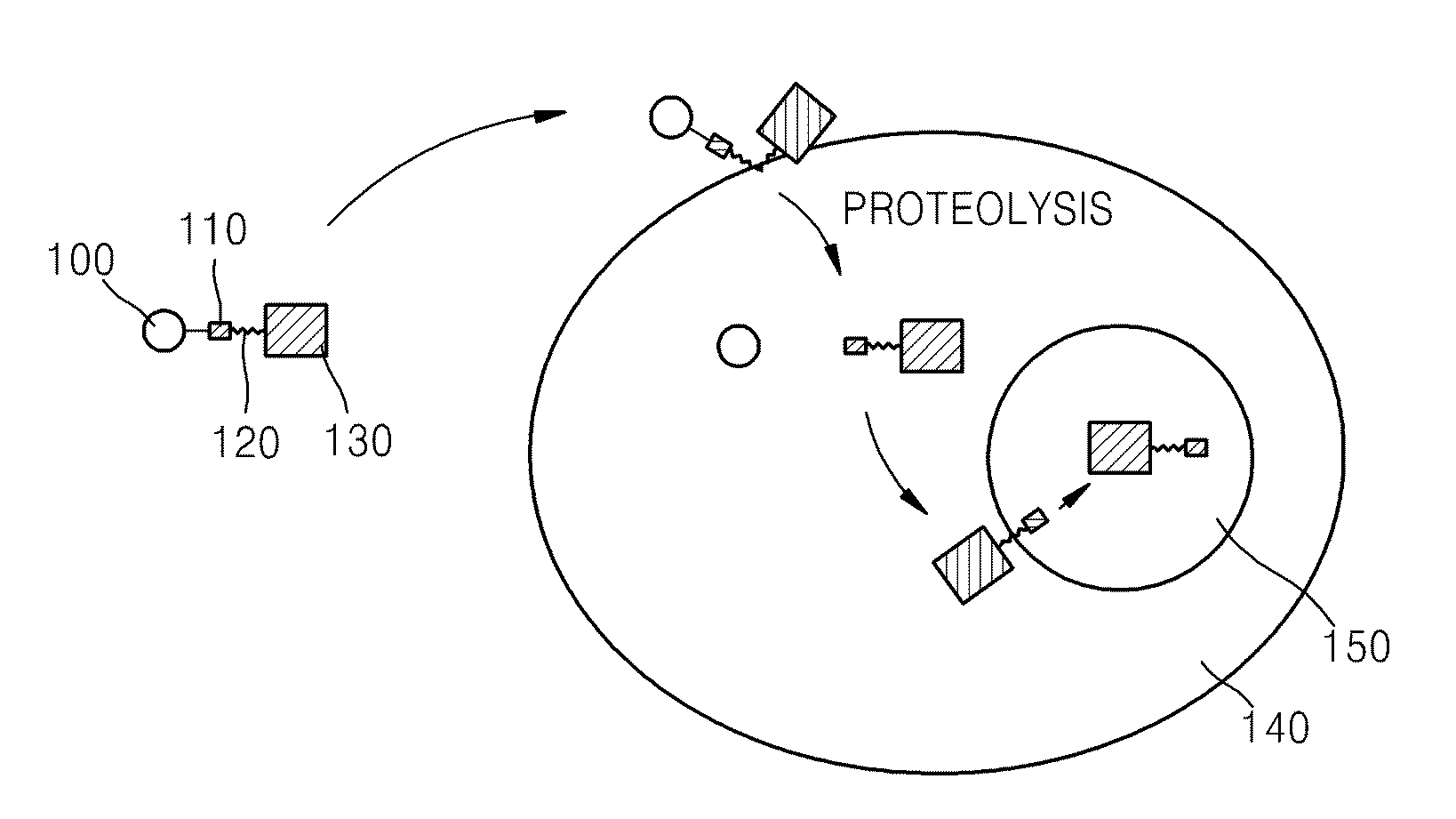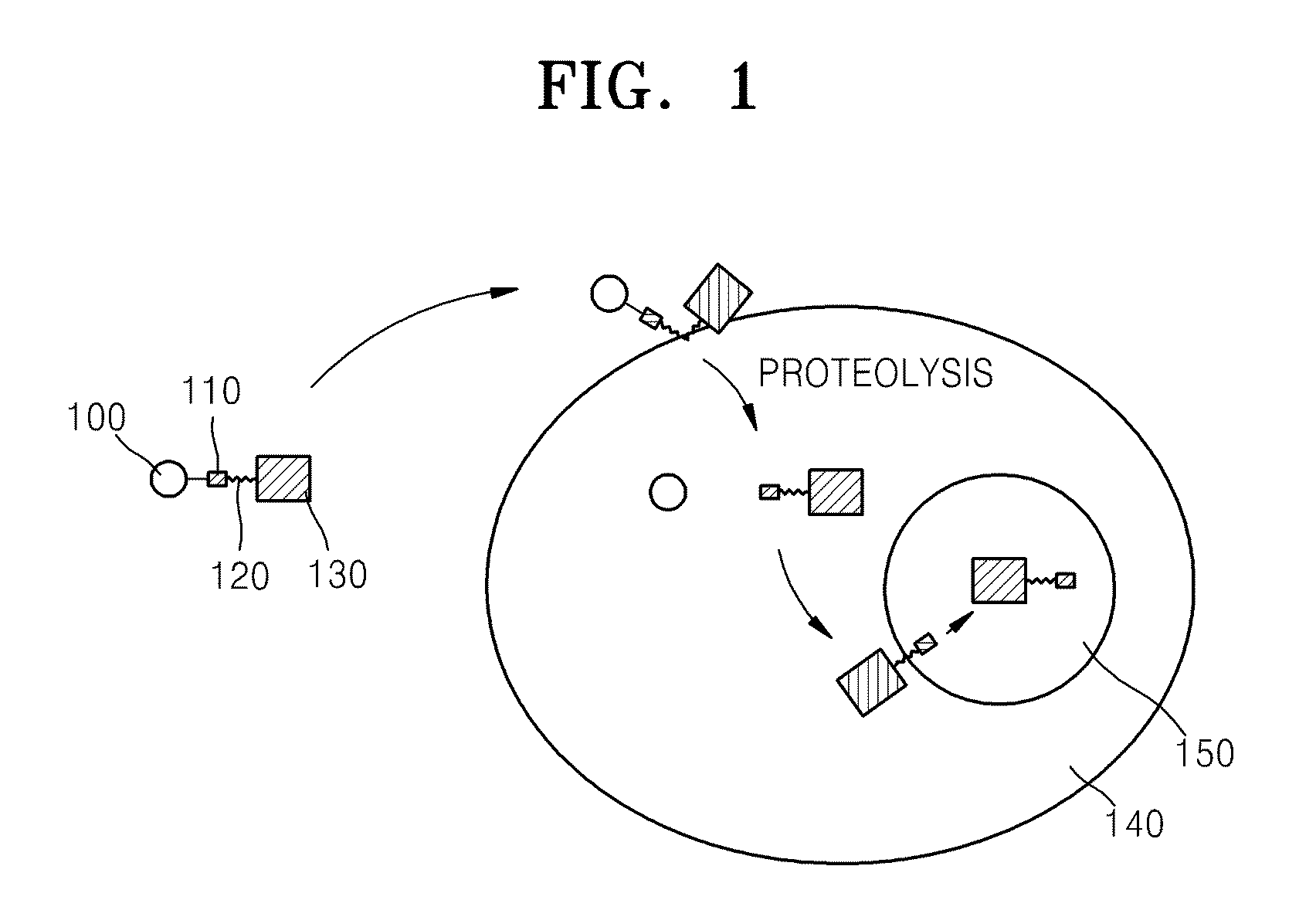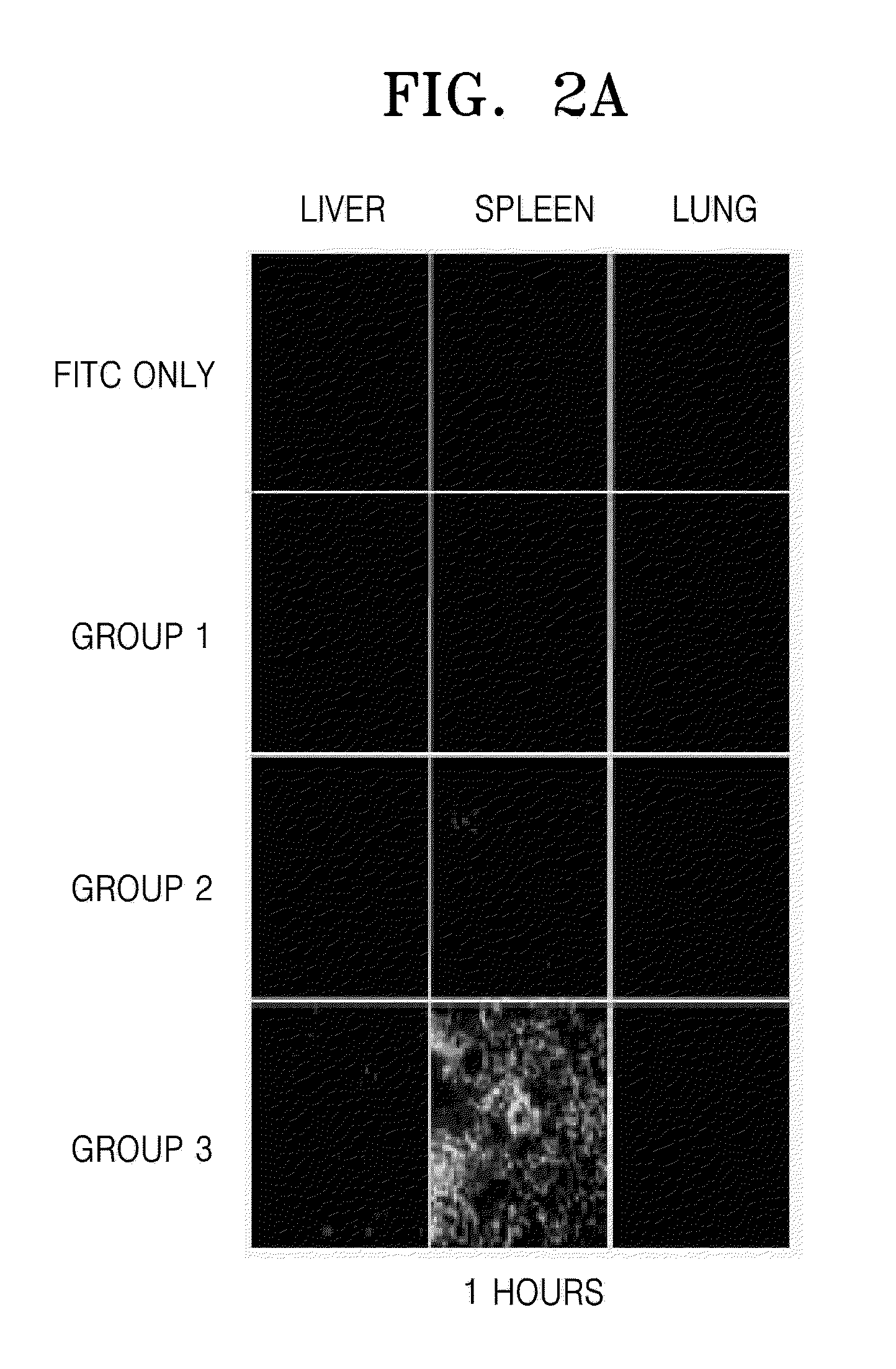Fusion protein comprising ubiquitin or ubiquitin-like protein, membrane translocation sequence and biologically active molecule and use thereof
a technology of fusion protein, which is applied in the direction of peptide/protein ingredients, dna/rna fragmentation, depsipeptides, etc., can solve the problems of difficult application of mts in animal tests, difficulty in ubiquitin or ubiquitin-like protein to penetrate the cell membrane, and limitations in the practical use of effective drugs
- Summary
- Abstract
- Description
- Claims
- Application Information
AI Technical Summary
Problems solved by technology
Method used
Image
Examples
example 1
Preparation of Expression Vector for a Transmembrane Fusion Protein Including Ubiquitin, NLS, MTS, and p53-p18
[0060]An expression vector was prepared for producing a transmembrane fusion protein including the hydrophilic polypeptide ubiquitin, a NLS, an MTS, and the biologically active polypeptide p53-p18 which are sequentially linked
[0061]In order to produce the transmembrane fusion protein, a pET-NLS-kFGF4-p53 expression vector was prepared that included a polynucleotide sequence encoding the NLS polypeptide sequence KKKRK (SEQ ID NO: 26), a polynucleotide sequence encoding a known MTS sequence, the leader sequence of kFGF4 growth factor (AAVALLPAVLLALLAP; SEQ ID NO: 1), and a polynucleotide sequence encoding the N-terminal fragment of p53 polypeptide (mdm2 binding domain). The expression vector was prepared by annealing the sense and antisense strands of oligonucleotide encoding NLS-kFGF4-p53 polypeptide (sense strand: 5′gttgaattcaaaaagaagagaaaggccgcggtagcgctgctcccggcggtcctgctggc...
example 2
Expression and Purification of the Transmembrane Fusion Protein
[0068]The transmembrane fusion protein was over-expressed in E. coli BL21(DE3) transformed with the pET-Ub-NLS-kFGF4-p53-p18(F71N) vector prepared according to Example 1. The transformed bacteria were grown in YT culture medium. When the optical density was 0.5 at an absorbance of 600 nm, 0.5 mM IPTG was added to the culture medium, and the transformed E. coli BL21(DE3) was further cultured at 18° C. for 16 hours. The cultured cells were sonicated in a 50 mM Tris-HCl buffer solution (pH 8.0) including 5% glycerol, 5 mM β-mercaptoethanol, 0.2% Triton X-100 and 0.2 M NaCl, and then centrifuged to obtain the supernatant (10,000 g). The supernatant was applied to a Ni2+-NTA superflow column (Qiagen) in equilibrium with the buffer solution, washed using a washing buffer solution (50 mM Tris-HCl, pH 8.0, 5% glycerol, 5 mM β-mercaptoethanol, 0.2% Triton X-100 and 1 M NaCl) having a volume 5 times that of the column, and eluted ...
example 3
Characterization of the Cell-Penetrating Property and Stability of the Transmembrane Fusion Protein
[0070]The cell-penetrating property of the transmembrane fusion protein prepared in Example 2 was measured in an animal model.
[0071]Seven week old nude mice (Balb / c mouse, Orient Bio, Inc., Korea) that were immunodeficient due to mutation in the major histocompatibility complex (MHC) were used as the animal model. Three groups of 3 mice were intraperitoneally injected with six hundred micrograms of a fusion protein at 1 μg / μl. The fusion proteins used for injection to a group of mice were the fusion protein including ubiquitin (Ub-NLS-kFGF4-p53-p18(F71N) (Group 3), the fusion protein not including ubiquitin (NLS-kFGF4-p53-p18(F71N) (Group 2), and a fusion protein including only p53-p18 (p53-p18(F71N), (Group 1). As an additional control, a fourth group of 3 mice were intraperitoneally injected with 600 μl of a Tris buffer solution including FITC (FITC). Then, cells were obtained from t...
PUM
| Property | Measurement | Unit |
|---|---|---|
| optical density | aaaaa | aaaaa |
| pH | aaaaa | aaaaa |
| pH | aaaaa | aaaaa |
Abstract
Description
Claims
Application Information
 Login to View More
Login to View More - R&D
- Intellectual Property
- Life Sciences
- Materials
- Tech Scout
- Unparalleled Data Quality
- Higher Quality Content
- 60% Fewer Hallucinations
Browse by: Latest US Patents, China's latest patents, Technical Efficacy Thesaurus, Application Domain, Technology Topic, Popular Technical Reports.
© 2025 PatSnap. All rights reserved.Legal|Privacy policy|Modern Slavery Act Transparency Statement|Sitemap|About US| Contact US: help@patsnap.com



